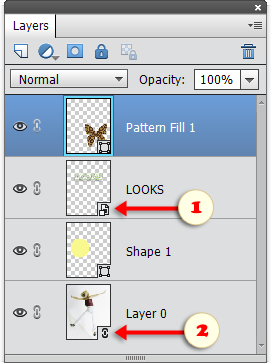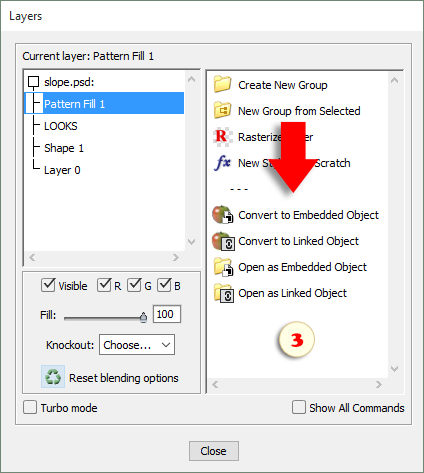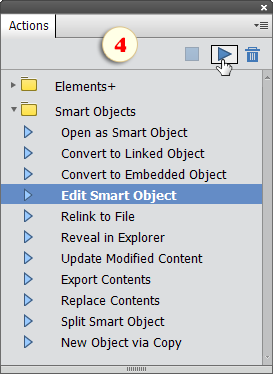About Smart Objects
"Smart object" is a kind of "child" file encapsulated in its "parent" document.
There are two kinds of smart objects: "embedded" and "linked" ones. In the Layers palette, you can recognize an embedded object by the special ![]() symbol on its thumbnail (fig. 1). The linked objects get marked with the "chain"
symbol on its thumbnail (fig. 1). The linked objects get marked with the "chain" ![]() pictogram (fig. 2).
pictogram (fig. 2).
An embedded ![]() object is included in the parent document as a whole. Which means that you can open the containing PSD-file on someone else's computer and modify the smart object contents. The embedded objects can significantly increase the file size.
object is included in the parent document as a whole. Which means that you can open the containing PSD-file on someone else's computer and modify the smart object contents. The embedded objects can significantly increase the file size.
The contents of a linked ![]() is stored in an external file, which usually allows to keep the parent file smaller. To modify a linked object we have to edit the related file file. Should the external file be missing, the linked object still will exist in the document, however we won't be able to edit its contents.
is stored in an external file, which usually allows to keep the parent file smaller. To modify a linked object we have to edit the related file file. Should the external file be missing, the linked object still will exist in the document, however we won't be able to edit its contents.
***
Why use smart objects? Well, the first reason is, that they can be transformed non-destructively (more about).
And even more important reason is smart filters. Imagine, that you can apply several filters to a text and then edit its contents without starting all over again.
On the other hand, the main shortcoming of the smart objects is that you can't edit it with regular tools. For instance, if you try to paint over a smart object with the ![]() Brush, PSE suggests "simplifying" layer.
Brush, PSE suggests "simplifying" layer.
You can find all the E+ functions for creating and handling smart objects in the Commands panel of the "Layers" dialog (fig. 3).
To use these commands without opening the Layers dialog, load "C:\Elements+\2024\Actions\Smart Objects.atn" set into the Actions panel (fig. 4).


